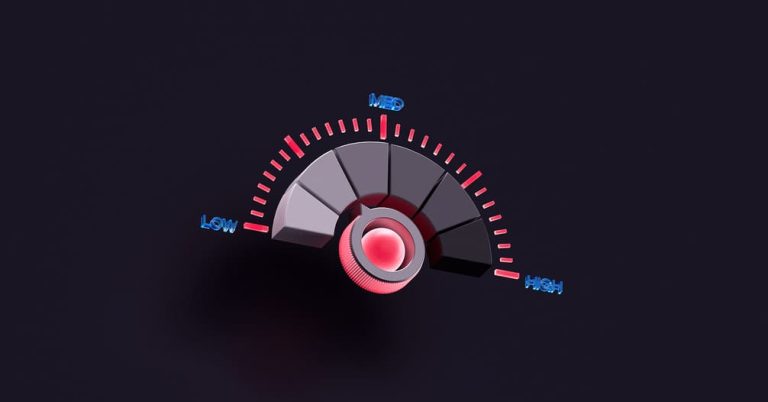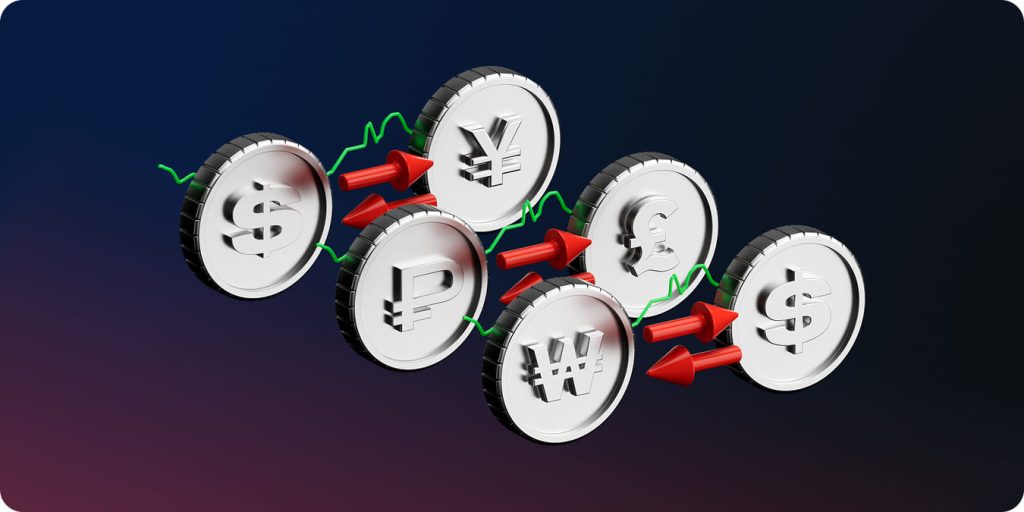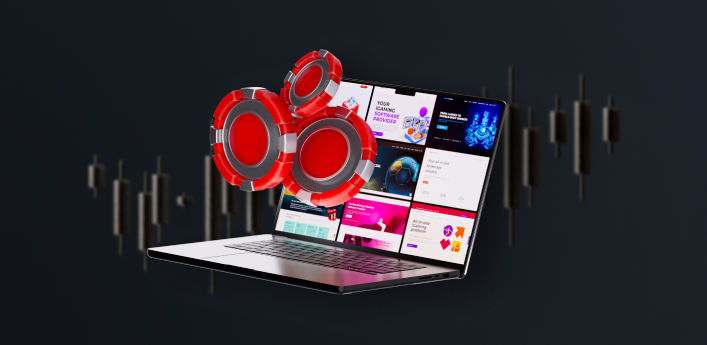
O que é alavancagem em negociação?
Conteúdo
Quando os traders usam dinheiro emprestado para obter uma posição maior no mercado do que seu próprio dinheiro permitiria, isso se chama alavancagem. É como usar uma ferramenta para levantar algo: um pouco de esforço pode levar a efeitos maiores. Essa abordagem pode valer a pena quando os preços de mercado sobem, mas também traz riscos. Este artigo detalha como a alavancagem pode ser complicada em investimentos e dá dicas de como usá-la, mantendo os riscos sob controle.
Portanto, alavancagem na negociação é basicamente usar dinheiro emprestado para negociar em valores maiores. Pense nisso como uma escada; ela permite que você alcance patamares mais altos.
Em termos simples:
- A alavancagem permite que você negocie com mais dinheiro do que você tem agora.
- É como usar um cartão de crédito. Se você tem US$ 1.000 e usa alavancagem de 10:1, pode negociar como se tivesse US$ 10.000.
- Se a sua negociação for bem-sucedida, seus lucros aumentarão! Mas se você perder, saiba que suas perdas também crescerão na mesma velocidade.
Quando usada corretamente, a alavancagem pode ser muito útil. Mas você precisa ter controle, planejamento e saber lidar com riscos.
O que é alavancagem?
Quando falamos sobre alavancagem em negociações, estamos basicamente falando sobre a prática de manter uma posição de negociação maior do que seria possível com o próprio dinheiro do negociador por meio do uso de dinheiro emprestado.
O uso da alavancagem evoluiu ao longo do tempo. No passado, apenas indivíduos com capital e fortes conexões com bancos ou credores tinham acesso à alavancagem. No entanto, com a acessibilidade dos instrumentos financeiros e o surgimento de plataformas de negociação online, a alavancagem tornou-se amplamente disponível. Negociação de margem em particular ganhou popularidade, permitindo que os comerciantes participassem de mercados que antes estavam fora de alcance.
Como funciona a alavancagem na negociação (com exemplos passo a passo)
A alavancagem na negociação é mais fácil de entender com números, então aqui está um exemplo:
- Digamos que você deposite US$ 1.000 em sua conta.
- Se você usar alavancagem de 10:1, poderá controlar uma posição no valor de US$ 10.000.
- Se o mercado subir 2%, sua posição agora vale US$ 10.200.
- Isso é um lucro de US$ 200 — um retorno de 20% sobre seus US$ 1.000 originais.
- Mas se o mercado cair 2%, sua posição cai para US$ 9.800.
- Isso é uma perda de US$ 200, ou -20% no seu capital.
A alavancagem potencializa seus resultados. Pequenas oscilações no mercado podem impactar seriamente seus lucros ou prejuízos.
Explicação dos índices de alavancagem e margem
Os índices de alavancagem determinam o nível de exposição ao investimento de uma pessoa. Negociação Forex Um índice de alavancagem comum pode ser de 50:1. Para cada dólar na conta de um trader, ele pode controlar até US$ 50 no mercado. Esses índices desempenham um papel na determinação do nível de alavancagem envolvido, o que, por sua vez, impacta os riscos e as recompensas potenciais.
Dependendo do classe de ativos e estratégias de negociação empregadas podem exigir diferentes índices de alavancagem, com algumas permitindo níveis de alavancagem enquanto outras defendem abordagens cautelosas.
Alavancagem e margem são conceitos interligados; representam o montante de fundos necessário em sua conta para iniciar uma negociação alavancada. Pode ser comparado a uma forma de depósito de segurança necessária para acessar fundos emprestados para negociações, quase como uma garantia. O requisito de margem inicial é definido pela plataforma de negociação ou corretora. Ele varia dependendo da classe de ativos e do índice de alavancagem utilizado. Se o mercado se mover desfavoravelmente e o valor da sua conta cair abaixo do requisito de margem, um temido... chamada de margem é acionado, solicitando que você adicione mais fundos para manter sua posição comercial.
Ao entender esses princípios, até mesmo os novatos no mercado podem começar a ver como a alavancagem funciona e por que ela serve como uma ferramenta e também como um aspecto potencialmente arriscado da negociação.
Alavancagem por tipo de ativo: visão geral
Diferentes mercados permitem que você use diferentes níveis de alavancagem. Veja como isso se compara a alguns tipos de ativos:
| Mercado | Alavancagem típica | Risco | Regulamento |
| Forex | Até 50:1 | Alto | Menos rigoroso (para pessoas comuns) |
| Ações | Até 2:1 (nos EUA) | Médio | Rigoroso (como FINRA, SEC) |
| Criptomoeda | Até 100:1 | Very Alto | Depende de onde você negocia |
Esses números podem variar dependendo da corretora que você utiliza, de onde você mora e do tipo de conta que você possui. Sempre leia as letras miúdas antes de negociar com alavancagem.
Exemplos em diferentes mercados: ações, forex, commodities
Existem diversos exemplos em mercados como ações, Forex e commodities. Na negociação de ações, a alavancagem permite que os traders ampliem sua exposição às flutuações nos preços das ações.
Imagine um cenário em que um investidor pode controlar US$ 10.000 em ações investindo US$ 1.000 com uma alavancagem de 10:1. Essa maior exposição ao mercado de ações significa que mesmo pequenas flutuações nos preços das ações podem afetar o investimento do investidor, positiva ou negativamente.
Quando nos concentramos nos mercados, vemos que a alavancagem também é comumente utilizada aqui. As características únicas do mercado, como liquidez e oportunidades de negociação contínuas devido à sua natureza 24/5, tornam-no favorável ao uso de alavancagem aumentada. É comum que traders administrem volumes de negociação com uma pequena parcela de seu capital real.
Na negociação de commodities, a alavancagem oferece aos traders a oportunidade de especular sobre os movimentos de preços de ativos como petróleo, ouro ou produtos agrícolas. A volatilidade inerente aos mercados de commodities, afetada por eventos geopolíticos e naturais, torna as negociações alavancadas nessas classes de ativos particularmente dinâmicas.
A principal diferença entre ações e Forex está em como eventos globais externos podem causar mudanças no mercado que impactam profundamente as posições.
Em todos esses mercados, a alavancagem permite que os traders aumentem o tamanho de suas posições além do que seu capital disponível permitiria.
A alavancagem é legal e quem a monitora?
Sim, é legal, mas é monitorado de perto, e as regras mudam dependendo de onde você está e do que está negociando.
Aqui está a análise:
Os Estados Unidos
Se você estiver negociando ações, só poderá usar o dobro do dinheiro que possui. Isso se deve às regras da FINRA e da SEC. A negociação Forex também tem seus limites, dependendo de quem você está negociando e do que está negociando.
Europa
Para evitar que investidores de varejo percam muito dinheiro, a Autoridade Europeia dos Valores Mobiliários e dos Mercados (ESMA) impôs limites à alavancagem. Os pares de moedas comuns têm um limite máximo de 30:1. Criptomoedas, índices e ações têm limites ainda menores.
Plataformas de Criptomoedas
A alavancagem pode ser muito variável e não tão controlada. Alguns sites fora dos EUA podem permitir que você chegue a 100:1, mas isso é arriscado e pode significar que você não estará protegido se algo der errado.
Vantagens de usar alavancagem
A alavancagem serve como uma ferramenta no mundo das finanças, oferecendo vantagens que podem impulsionar o desempenho das negociações quando utilizadas com sabedoria. Uma das principais vantagens de alavancar uma conta de negociação é o potencial para maiores lucros. Por meio da alavancagem, os traders podem ampliar seus ganhos com as oscilações do mercado; mesmo uma pequena alta no preço de um ativo pode resultar em ganhos em comparação com o investimento inicial. Essa capacidade de aumentar os lucros sem comprometer grandes quantias de capital antecipadamente é especialmente atraente nos mercados Forex, onde as flutuações de preço são normalmente pequenas, mas podem ser ampliadas com a alavancagem.
O uso eficiente de capital é outro aspecto da negociação alavancada. Ao utilizar fundos emprestados para abrir posições, os traders podem alocar menos capital, liberando recursos para outros investimentos ou operações. Essa eficiência pode ser transformadora para traders com fundos que desejam explorar estratégias de negociação em diferentes instrumentos financeiros ou classes de ativos.
Além disso, a alavancagem desempenha um papel importante na diversificação do portfólio. A capacidade de controlar posições maiores que o capital real permitiria aos traders distribuir seus investimentos entre os ativos.
Expandir o alcance nas negociações pode ajudar a minimizar o impacto das perdas causadas pelo desempenho de um ativo ou classe de ativos, e é por isso que muitos traders consideram a alavancagem uma ferramenta valiosa para equilibrar seus portfólios de investimento.
Além disso, a alavancagem desempenha um papel importante nas táticas de hedge. Traders e investidores utilizam a alavancagem para estabelecer posições que podem compensar perdas de ativos, atuando como uma proteção contra oscilações desfavoráveis do mercado. Por exemplo, se alguém possui uma carteira de ações, pode usar a alavancagem no mercado Forex para mitigar riscos cambiais. Esse uso estratégico da alavancagem destaca sua importância na implementação estratégias de gestão de risco .
Melhores práticas para usar alavancagem
A alavancagem pode aumentar seus lucros, mas somente se usada com responsabilidade. Aqui estão algumas dicas essenciais para usar a alavancagem com segurança:
- Comece pequeno - Comece com baixa alavancagem (como 2:1 ou 5:1) para descobrir as coisas e se acostumar com a forma como o mercado se move.
- Controle de Riscos - Não arrisque mais de 1% a 2% do seu dinheiro em uma única operação. Isso te protege caso algumas operações não dêem certo.
- Use sempre um Stop-Loss - Defina um stop-loss para limitar suas perdas. É vital, especialmente quando o mercado está instável.
- Negociação sem vingança - Evite aumentar sua alavancagem após uma perda. Mantenha seu plano.
- Fique calmo - A alavancagem amplifica as emoções. Não deixe que os sentimentos controlem o que você faz.
- Conheça sua margem - Fique de olho nas regras de margem da sua corretora. Monitore suas posições para evitar chamadas de margem.
Quem deve usar alavancagem e quem não deve?
A alavancagem pode turbinar suas negociações, mas não é para todos.
Ótimo se você for um trader experiente:
- Se você entende como a análise técnica, o gerenciamento de riscos e a leitura do mercado funcionam,
- Se você tem um plano sólido ao qual se apega.
- Se você estiver no topo de suas posições e puder fazer chamadas rápidas.
- Se você conseguir manter a calma e não surtar com vitórias ou derrotas.
Tenha cuidado se você é iniciante:
- Os novos operadores geralmente veem a alavancagem como um atalho para retornos rápidos, mas princípios de negociação para iniciantes enfatizar a disciplina em detrimento da velocidade.
- Mas se você não sabe o que está fazendo, a alavancagem pode piorar muito seus erros.
- Se você é novo, comece aos poucos (ou não comece) e aprenda o básico primeiro.
A alavancagem não faz você ter sucesso magicamente, apenas torna as coisas maiores. Como iniciante, concentre-se em aprender e não aposte mais do que você pode perder.
Riscos e Considerações
No entanto, as qualidades que tornam a alavancagem atraente também trazem riscos significativos. Por outro lado, existe a possibilidade de perdas crescentes; assim como os ganhos podem ser amplificados, as perdas também podem. A alavancagem é frequentemente comparada a uma faca de dois gumes, pois, se o mercado se mover contra a posição de um trader, as perdas incorridas podem rapidamente superar o investimento, às vezes exigindo depósitos adicionais do trader para cobrir o déficit.
Chamadas de margem representam um risco na negociação. Elas ocorrem quando o valor das posições cai abaixo do limite estabelecido, levando a plataforma a solicitar fundos adicionais para manter essas posições abertas. Chamadas de margem podem surgir inesperadamente nos mercados, forçando os traders a vender posições com prejuízo caso não consigam atender prontamente ao requisito de margem.
A volatilidade do mercado pode ser especialmente perigosa para as operações. Condições instáveis de mercado podem levar a rápidas flutuações de preços, aumentando a exposição ao risco das posições. Isso pode resultar na necessidade de ajustes para manter a margem exigida, enquanto movimentos bruscos do mercado podem desafiar as abordagens de gestão de risco de traders experientes.
You may also like

Sejam traders ou fundos de hedge consolidados, o mundo financeiro tem visto como a alavancagem pode resultar em grandes contratempos quando as condições de mercado sofrem uma retração. Esses incidentes frequentemente revelam práticas de gestão de risco, uma superestimação da previsibilidade do mercado ou a pura imprevisibilidade dos mercados, que podem invalidar até mesmo as estratégias de alavancagem mais cuidadosamente planejadas.
Considerando esses fatores, reconhecer e reconhecer os riscos associados à alavancagem é crucial. Isso exige uma abordagem que integre princípios rigorosos de gestão de risco e uma avaliação realista das condições de mercado e da resiliência financeira do investidor.
PRINCIPAIS CONCLUSÕES
- A alavancagem nas negociações atua como um multiplicador, permitindo que os traders ampliem sua presença no mercado e seus lucros potenciais usando capital emprestado. Não se trata apenas de ganhos maiores; trata-se de utilizar alavancagem financeira calculada para abrir posições maiores do que o próprio capital permitiria, mantendo sempre um olhar atento à dinâmica de risco versus recompensa.
- O uso estratégico da alavancagem vai além da mera especulação, servindo como um componente-chave em estratégias de negociação sofisticadas. Trata-se de alavancar ferramentas financeiras para criar um portfólio que resista às flutuações do mercado e capitalize seus movimentos com visão e agilidade.
- Estratégias eficazes de gestão de risco são a base do sucesso em operações alavancadas. Compreender as implicações dos requisitos de margem e o potencial para chamadas de margem é crucial, transformando a consciência de risco na bússola inabalável do trader nos mares financeiros frequentemente turbulentos.
- A alavancagem é uma força poderosa no trading e, como qualquer força, deve ser respeitada e compreendida. Uma abordagem consciente à alavancagem envolve reconhecer sua natureza dúbia — onde há potencial para recompensas maiores, os riscos são igualmente ampliados. O trader experiente usará a alavancagem como um componente calculado dentro de uma estratégia de investimento mais ampla e bem pensada.
Equívocos comuns e a verdade sobre alavancagem
Alavancagem parece legal, não é? Ganhos maiores, menos dinheiro investido, ganhos mais rápidos. Mas as pessoas costumam errar porque acreditam em coisas erradas. Vamos analisar alguns desses mitos e o que realmente está acontecendo:
Mito 1: Alavancagem sempre significa mais dinheiro
Verdade: A alavancagem aumenta as vitórias e as perdas.
Muitos traders acreditam que a alavancagem é uma garantia de lucro. Ela pode aumentar seus ganhos, mas também pode fazer você perder muito mais. Se o mercado cair 2% e você estiver usando uma alavancagem de 20:1, poderá perder 40% do seu investimento. Sem um stop-loss, um pequeno erro pode destruir toda a sua conta.
Mito 2: Quanto maior a alavancagem, melhor
Verdade: Mais alavancagem significa mais risco.
É tentador apostar alto com a maior alavancagem possível, como em Forex ou criptomoedas, onde você pode obter 50:1 ou até 100:1 em alguns sites. Mas quanto mais alavancagem você usar, menos margem de manobra terá. Se o mercado se mover um pouco contra você, você poderá receber uma chamada de margem ou ter sua posição fechada automaticamente.
Mito 3: Somente profissionais usam alavancagem
Verdade: Qualquer um pode usar alavancagem, mas é preciso ser inteligente.
Muitas plataformas oferecem opções de alavancagem fáceis de entender, mesmo para quem está começando. Mas só porque você pode usá-las não significa que deva. Mesmo se você for iniciante, pode usar alavancagem, desde que conheça as regras (requisitos de margem), controle seus riscos e comece com pouco.
Mito 4: Alavancagem é apenas para Forex ou Criptomoedas
Verdade: Você pode usar alavancagem em muitos mercados — ações, commodities e muito mais.
Forex e criptomoedas são conhecidos por sua alta alavancagem, mas você também pode negociar com margem em outras áreas. Cada mercado tem regras e limites diferentes para alavancagem, então certifique-se de saber o que está acontecendo antes de começar.
Mito 5: Você precisa de muito dinheiro para usar a alavancagem
Verdade: A alavancagem existe para ajudar pessoas com menos dinheiro a se envolverem, mas contém riscos.
A alavancagem permite que pequenos traders joguem em um grupo maior sem precisar de muito dinheiro. Ainda assim, não substitui a gestão inteligente do seu dinheiro. Não é algo para enriquecer rapidamente — você precisa controlá-lo.
Mito 6: Alavancagem é uma estratégia
Verdade: Alavancagem é apenas uma ferramenta.
As pessoas costumam pensar que usar alavancagem é uma estratégia. Não é. A alavancagem deve tornar um bom sistema de negociação ainda melhor. Ela não substitui fazer a lição de casa, observar gráficos e ser disciplinado. Se você não tiver um plano, a alavancagem só vai te colocar em apuros mais rápido.
Estratégias de Gestão de Risco para Negociação Alavancada
A negociação alavancada pode ampliar tanto os lucros quanto as perdas, ressaltando a importância da gestão de riscos para o sucesso. Sem uma gestão de riscos adequada, as próprias ferramentas que potencializam os ganhos podem facilmente resultar em perdas substanciais. Abaixo, algumas estratégias para ajudar você a mitigar os riscos ao negociar com alavancagem:
Implementar ordens de stop loss
Uma ordem stop loss é um ponto de preço predeterminado no qual sua operação será fechada automaticamente para restringir suas perdas. Isso representa uma das técnicas de gerenciamento de risco. Ao utilizar um stop loss, você pode garantir que suas perdas sejam limitadas a um nível alinhado com sua tolerância ao risco em condições de mercado voláteis. O segredo é definir o stop loss em um nível que permita alguma flexibilidade, ao mesmo tempo em que protege seu capital investido.
Empregar Trailing Stops
Um trailing stop funciona como um tipo de ordem stop loss que se ajusta às variações dos preços de mercado. Você pode garantir seus lucros em um mercado em alta e, ao mesmo tempo, se proteger contra perdas usando um trailing stop. Quando o preço de mercado sobe, o trailing stop também sobe. Se o preço de mercado cair, o trailing stop permanece em seu ponto para ajudar você a manter parte dos seus ganhos.
Manter uma relação risco-recompensa
Além disso, é importante manter uma relação risco-recompensa ao negociar a longo prazo. Essa relação indica quanto risco você está disposto a correr em troca de recompensas. Muitas vezes, recomenda-se uma relação de pelo menos 1:2 ou superior, onde você arrisca US$ 1 para um ganho potencial de US$ 2 ou mais. Essa estratégia garante que seus lucros potenciais superem as perdas, o que é crucial para o sucesso sustentável nas negociações.
Diversifique seus negócios
Diversificar suas operações é crucial para gerenciar o risco nas negociações. Ao distribuir seus investimentos por classes de ativos, setores ou regiões, você pode reduzir o impacto de qualquer operação com desempenho ruim. A diversificação ajuda a estabilizar os retornos e reduz o risco.
Fatores psicológicos na negociação alavancada
Negociar com alavancagem não testa apenas sua perspicácia, mas também avalia sua força. O potencial ampliado de lucros e perdas pode desencadear tendências de tomada de decisão que podem minar estratégias de negociação. Entender os componentes em jogo na negociação e aprender a controlá-los é essencial para alcançar sucesso sustentado ao longo do tempo.
Lidando com o estresse
O medo de perder mais do que investiu pode realmente pesar sobre você, causando muito estresse que pode levar à tomada de decisões. O estresse tende a obscurecer seu julgamento e dificultar a adesão ao seu plano de negociação, muitas vezes resultando no fechamento antecipado de operações ou na manutenção de posições perdedoras por muito tempo na esperança de que a situação melhore.
Excesso de confiança
O uso de alavancagem pode, às vezes, dar aos traders uma sensação de confiança após uma sequência de negociações bem-sucedidas. Essa falsa crença pode levá-los a pensar que têm mais controle sobre o mercado do que realmente têm, levando-os a assumir riscos além do razoável. Esse excesso de confiança pode levar à alavancagem, à desconsideração dos princípios de gestão de risco e, por fim, a perdas.
FOMO: Medo de Perder Algo
Uma armadilha comum é o medo de ficar de fora (FOMO), que pode fazer com que os traders ajam precipitadamente ao usar alavancagem. A promessa de lucros pode induzi-lo a entrar em negociações sem análise, por medo de perder uma oportunidade.
Para combater o medo de ficar de fora (FOMO), crie um plano de negociação. Siga-o à risca. Defina critérios para entrar e sair de operações. Resista à tentação de se desviar das suas regras, mesmo que um movimento do mercado pareça bom demais para ser ignorado.
You may also like

Altos e baixos emocionais
Grandes ganhos podem trazer euforia, enquanto perdas significativas podem levar ao desespero. Essas oscilações emocionais podem obscurecer seu julgamento, fazendo com que você busque perdas ou fique excessivamente entusiasmado com ganhos que levam a um comportamento de negociação.
Para gerir eficazmente estas emoções, tente distanciar-se de cada negócio e apoiar-se nos princípios fundamentais de cada um. psicologia de negociação Evite se prender aos resultados das negociações e, em vez disso, concentre-se na perspectiva – lucratividade a longo prazo. Manter um diário de negociações pode ajudá-lo a monitorar suas reações e a reconhecer quaisquer padrões que possam impactar seu processo de tomada de decisão.
Paralisia por Análise
Quando os riscos são elevados, existe o potencial para a "paralisia da análise" – a dificuldade para tomar decisões devido ao escrutínio dos dados de mercado. Isso pode resultar em oportunidades perdidas ou respostas tardias às mudanças do mercado.
Otimize sua rotina de negociação focando em indicadores e sinais alinhados à sua estratégia. Estabeleça um prazo para análise antes de tomar uma decisão e confie no seu plano de negociação. Prática e experiência consistentes construirão a confiança necessária para tomar decisões.
Conclusão
A alavancagem vai além do aumento do poder de compra; envolve a tomada de decisões e uma avaliação cuidadosa dos riscos. Ela oferece oportunidades para estratégias de negociação , capacitando traders a progredir no mundo financeiro. Com os insights compartilhados neste artigo, os traders estão mais bem preparados para encarar a alavancagem não como uma tática, mas como uma ferramenta em seu arsenal de negociação — uma ferramenta que precisa ser ajustada para corresponder aos ritmos do mercado e aos objetivos financeiros pessoais.
FAQ
A alavancagem permite que você negocie quantias maiores do que as que você tem em conta. É como pedir dinheiro emprestado para aumentar seu poder de negociação, o que pode significar ganhos ou perdas maiores.
A alavancagem pode aumentar seus lucros, mas também pode aumentar muito suas perdas. Você pode perder mais do que investiu se não tomar cuidado. Usar ordens stop-loss é uma boa ideia para proteger seu dinheiro.
Se você é iniciante, comece com uma alavancagem baixa, como 2:1 ou 5:1. Conheça os mercados e aprenda a gerenciar riscos antes de aumentar os riscos.
Se sua conta cair muito e você não adicionar mais fundos, seu corretor poderá fechar suas negociações automaticamente, e você terá prejuízo.
Você pode usar alavancagem em Forex, ações, criptomoedas, commodities e índices. A quantidade que você pode usar depende do que você está negociando e das regras da sua região.
Na verdade, não. Alavancagem é o valor que você pode emprestar, e margem é o dinheiro que você precisa em sua conta para manter uma operação aberta.
Atualizado:
11 de julho de 2025



